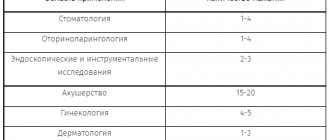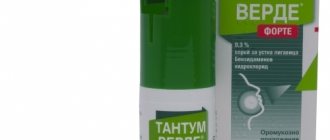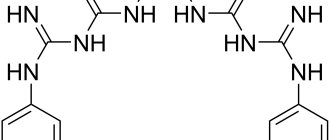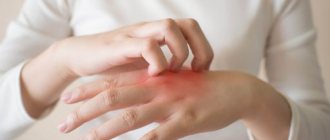From this article you will learn:
- what lidocaine-based drugs are used in dentistry,
- How much stronger is lidocaine than novocaine?
- What anesthetics are even stronger than lidocaine.
The article was written by a dental surgeon with more than 19 years of experience.
Lidocaine is a drug that is a local anesthetic, which is used for pain relief during the treatment and extraction of teeth, as well as when opening purulent abscesses. The analgesic effect of this drug is approximately 2 times higher than the effectiveness of novocaine, but 1.5-2 times inferior to ultracaine. For lidocaine, the instructions for use of the drug in dentistry contain information about the following forms of release:
- lidocaine in ampoules and carpules,
- lidocaine spray,
- lidocaine gel.
Below we will analyze in detail the use of each form, their pros and cons.
Lidocaine spray - how effective it is for toothache
Toothache is one of the most severe and painful. In some cases, even pharmacy painkillers are not able to bring relief. Of course, you cannot tolerate such severe discomfort - you need to immediately run to the doctor. However, it is not always possible to promptly seek medical help, and then the only option to relieve acute toothache is to take painkillers. One of these drugs is Lidocaine. The product is available in various forms, including a spray for self-use. In general, this drug in dentistry is often used as an anesthetic before treatment, which indicates its unconditional effectiveness. Today we’ll talk about the effect of “Lidocaine” on teeth, its release forms, indications for use, and we will also provide simple and understandable instructions for using the spray.
Composition and pharmacological properties
Lidocaine is a substance known for its deep and rapid-onset analgesic effect. Thanks to the component in the drug, the painful and unpleasant sensations that develop during the procedures disappear completely.
In addition, the composition contains aromatic compounds (apple, citrus, wild berries), providing a pleasant aftertaste.
Complete composition of the medicine from the instructions:
- lidocaine – 15%;
- distilled water;
- sorbitol;
- sodium benzoate;
- xylitol;
- menthol;
- thymol;
- poly 1-vinyl-2-pyrrolidone;
- glycerol;
- 2,6-dimethyl;
- aromatic additives.
Additional components include yarrow, chamomile (their extracts), and saccharin.
The main purpose of Lidoxor is pain relief. Its action is sufficient to relieve pain and other negative sensations when performing any dental procedure.
A similar effect occurs due to the blockade of pain impulses transmitted by nerve endings to the brain. The result of use occurs within 1-2 minutes from the moment of application, and lasts up to 20 minutes.
This time is enough for the dentist to inject a more potent anesthetic into the gums.
The drug is also necessary when the patient experiences unpleasant sensations that occur when an anesthetic is injected, i.e., it completely eliminates discomfort when performing an injection .
This method is especially relevant for young patients who become hysterical at the sight of a syringe - crying and panic prevent the doctor from working.
For what purpose does the dentist direct the patient to take a targeted photograph of the tooth, and how is the procedure performed?
Go here to learn more about using Glasspan tape for splinting teeth.
At this address https://www.vash-dentist.ru/lechenie/zubyi/kak-vyibrat-stomatologa.html we will tell you how to choose the right dentist for yourself and your family.
In what forms is the drug produced, components
Today, the drug is produced in 3 forms: in ampoules - an injection for the tooth, in the form of a gel with Lidocaine and a spray for the teeth. Further in this article we will concentrate on considering the spray, which is a colorless liquid, but with a pleasant menthol scent. The main active ingredient is the anesthetic of the same name - its concentration in a solution of 3.8 g (one bottle) is 4.8 mg. The composition of the drug also includes the following substances:
- propylene glycol,
- mint oil,
- ethanol solution – 96%.
A standard bottle holds approximately 650 doses. The kit includes a glass jar with a dispenser, a spray bottle and instructions for using the product.
Indications and restrictions
The use of Lidoxor in dentistry is relevant when performing:
- tooth extraction;
- mucosal anesthesia;
- cleaning enamel from tartar;
- tearing out milk units;
- opening and subsequent removal of periodontal abscess.
The main and only limitation for use is an allergy to the component composition.
Important! Before using the product, the dentist must make sure that the person does not have a reaction to the main active ingredient - lidocaine.
An allergy can manifest itself in the form of urticaria, dermatitis, swelling of the mucous and soft tissues of the mouth, an attack of suffocation, anaphylactic shock or Quincke's edema.
An allergy test should be performed before performing an anesthetic procedure , this is especially true for children, in whom the reaction develops faster and is more difficult to tolerate.
Pharmacology and pharmacokinetics - highlights
The active component of the spray effectively reduces the susceptibility of nerve endings, and this happens by blocking the conduction of the corresponding impulses. Acting systemically, the substance also provides an effect similar to that of antiarrhythmic drugs, but its use for therapeutic purposes does not in any way affect the functioning of the heart. If Lidocaine is sprayed near the respiratory tract, it also prevents coughing and gagging.
The drug also prevents coughing and vomiting.
The drug is quickly absorbed, and if a small amount of the drug enters the gastrointestinal tract, the active component is inactivated. The action occurs within 5-10 minutes. Metabilized in the liver by 90-95%.
In what cases is it used?
In dental practice, Lidocaine is used in various forms, including as a spray. The drug helps to anesthetize a limited area of the mucous membrane, and also promotes vasodilation without tissue irritation. Below are the main indications for use:
- for dental treatment in the presence of any dental diseases,
- for tooth extraction,
- for problematic teething,
- with stomatitis,
- as part of professional cleaning and removal of deposits,
- before opening cystic neoplasms.
The drug is usually administered by injection.
To eliminate sensitivity before treatment, the drug is usually administered by injection. In the form of a spray, it is sometimes applied before an anesthetic injection. Many people are interested in how long dental anesthesia lasts and wears off. Usually the effect occurs within 5 minutes, lasts for 1-2 hours, after which sensitivity is restored. Therefore, it is not recommended to eat for some time after treatment, since you can accidentally injure your tongue. The spray is also widely used for toothache at home.
Possible side effects
Like all medicines, lidocaine can cause side effects, although not everyone gets them.
Severe allergic reactions (rare, may affect 1 in 1,000 people)
If you have a severe allergic reaction, tell your doctor immediately.
Its symptoms may include sudden onset:
- Swelling of the face, lips, tongue, or throat. This may cause difficulty swallowing.
- Severe or sudden swelling of the arms, legs, and ankles.
- Difficulty breathing.
- Severe itching of the skin (with swelling).
Other side effects:
- skin irritation in areas where lidocaine is used,
- nervousness,
- dizziness,
- drowsiness,
- loss of consciousness,
- a sore throat,
- hoarse voice or loss of voice,
- lowering blood pressure. This may lead to dizziness or delirium,
- convulsions,
- difficulty or slow breathing,
- bradycardia,
- stopping breathing or heartbeat.
Side Effect Reporting:
If you notice any side effects, tell your doctor, pharmacist or nurse. This includes any possible side effects not listed in this leaflet. You can also report side effects by going to the website www.arpimed.com and filling out the appropriate form “Report a side effect or ineffectiveness of a drug” and to the Scientific Center for Expertise of Medicines and Medical Technologies named after. Academician E. Gabrielyan by going to the website www.pharm.am to the “Report a side effect of a drug” section and fill out the form “Card of reporting a side effect of a drug.” Scientific center hotline phone number: +37410237665; +37498773368
How to store Lidocaine
- Keep out of the reach of children.
- Shelf life – 3 years. Do not take Lidocaine after the expiration date indicated on the drug package. When indicating the expiration date, we mean the last day of the specified month.
- Store out of reach of children, protected from light at a temperature not exceeding 150C.
- Your doctor/dentist or other healthcare provider should ensure that lidocaine is stored properly. Appropriate hospital personnel are responsible for the proper storage, administration, and disposal of lidocaine.
- Medicines should not be disposed of in wastewater or sewer systems. Ask your pharmacist how to dispose of any medicine you no longer need. These measures are aimed at protecting the environment.
Package contents and additional information
What Lidocaine contains
active substance: lidocaine – 50 mg;
other components: light liquid paraffin, isopropyl myristate, propylparaben.
What Lidocaine looks like and contents of the pack
Transparent colorless solution.
Description of packaging
primary: 15 ml of a 5% solution (spray) is filled into a plastic bottle with a metered mechanical sprayer.
secondary: 1 bottle along with an insert leaflet is placed in a cardboard pack.
Vacation conditions
Dispensed by prescription.
In what situations is Lidocaine in spray form contraindicated?
There is a list of contraindications to the use of the anesthetic in question. Such pathological phenomena include the following conditions:
- intolerance to the active substance,
- allergy to anesthetic,
- if the patient has had seizures in the past as a result of taking any form of lidocaine,
- frequent fainting,
- bradycardia,
- weak sinus node
- some pathologies of the heart and blood vessels.
The drug is not used when taking impressions of teeth.
Also, the spray is not used when taking impressions of teeth - the risk of penetration of the material into the respiratory system is too great. Before using the product, the specialist must make sure that the patient has no contraindications.
Pros and cons of the product
The main advantage of both forms of the drug is that they do not cause symptoms of burns or tingling of the mucous membrane . Lidoxor can be used for people with allergies to benzocaine derivatives, since these substances are absent.
Each form has a number of its advantages and disadvantages. Thus, the gel binds to tissues better than a spray, as a result of which it does not drain from the treated area.
The spray does not have this property. It is widely sprayed throughout the mouth and exerts its effect over a wide area. For many patients, extensive exposure to the spray causes discomfort.
The gel, as opposed to the spray, does not have large-scale spraying. It manifests its effect only in the required area and does not develop negative sensations. Therefore, most doctors prefer to use Lidoxor in gel form in their work.
The purpose of Forfenan paste in dentistry and the advantages of using it when filling root canals.
In this publication, we will find out what can trigger the development of galvanism in the oral cavity.
Here https://www.vash-dentist.ru/lechenie/zubyi/rasprostranennyih-patologiy.html we will look at the most common dental pathologies.
Instructions and dosage
Lidocaine spray is intended for spraying onto the mucous surface in the problem area where sensitivity needs to be blocked. Let's figure out how to use it correctly and how to use Lidocaine to numb a tooth. The scheme here is very simple: before applying the drug, the bottle needs to be shaken thoroughly, while holding it strictly vertically. 3-5 sprays are enough to provide the required degree of anesthesia and prevent the absorption of too high concentrations of substances into the blood.
If we are talking about anesthetizing an area of the oral mucosa in a child, then we should do it differently. To begin with, the product must be sprayed onto a small piece of gauze, which must then be applied to the affected area. This method of applying the product is used so as not to inadvertently scare the baby, and also not to provoke a burning sensation in his mouth. For patients suffering from impaired liver and kidney function, the dosage should be reduced by at least 40%1.
Instructions for use
Due to the difference in the consistency of the spray and gel, these two forms of Lidoxor have different methods of use.
Gel
Before using the gel, you must first dry the oral mucosa. Afterwards, squeeze out the required amount of product from the tube and apply to the required area of the mucous membrane.
To get the maximum result from the gel, it is recommended to apply it to a cotton swab and then apply it to the prepared mucosal surface.
Spray
The spray is used differently. First, before use, you also need to dry the mucous membrane. Then direct the sprayer to the desired area and press the valve twice, spraying the drug.
It is not recommended to spray the product far from the anesthesia fragment, as it may end up on the skin of the face or get into the eyes.
Important! Both forms of Lidoxor are intended only for use in a medical facility. You cannot use the drug yourself at home.
Possible side effects
We figured out how to use Lidocaine spray, and now we’ll find out what side effects the drug can cause. So, after applying the product, the patient may experience local negative reactions such as burning, redness of the mucous membrane or skin. As a rule, such manifestations disappear on their own immediately after the onset of the analgesic effect. There is also a risk of developing allergies, which can manifest as itching and rashes. In extremely rare situations, anaphylactic shock occurs.
Some anxiety is likely to appear as a reaction of the nervous system. In some cases, the drug leads to a decrease in heart rate or blood pressure. To decide whether it is possible to use Lidocaine anesthesia for dental anesthesia in relation to a particular patient, the doctor must first make sure that he has no contraindications to the use of the drug.
Use for pregnant women and children
Clinical studies conducted on the effect of this drug on the condition of the pregnant woman and the unborn child did not reveal any negative effects.
There is also evidence that lidocaine may pass into breast milk.
But the amount is so small that the substance cannot cause any serious harm to the child. Therefore, because of a single use of the product, a mother should not stop breastfeeding her baby.
Lidoxor is approved for use by children, but with one caveat. Since children's bodies are more susceptible than adults, it is necessary to do an allergy test before application.
Additional instructions for use
Before spraying the spray on the mucous membrane, you need to carefully study the instructions that come with the kit. There are several special points to consider when using Lidocaine. Let's take a closer look at them.
During pregnancy and lactation
The drug is allowed for use in therapeutic doses during pregnancy. However, you should consult your doctor before using it. As for the lactation period, in this case it is better to wait to use the drug while the child is breastfed.
Use during pregnancy should be agreed with your doctor.
Read more about dental treatment during pregnancy in our special article>>>
Use in childhood
Lidocaine in the form of a spray is approved for children, but there are some nuances here. So, for example, it is recommended to apply the drug to children under the age of 2 years in a special way: first, the product needs to be sprayed onto a small gauze pad, and then applied to the area of pain. It should be taken into account that in childhood the swallowing reflex occurs more often than in adults, therefore it is not recommended to spray the anesthetic directly.
This is what an allergy to lidocaine looks like in a child
“The doctor prescribed Lidocaine for us after we had a baby tooth with gumboil removed. He said to apply it on cotton wool and apply it to the swollen gum so that it doesn’t hurt too much. We used it for just a couple of days, everything healed quickly, and the child did not complain of pain. Of course, you’d better consult your doctor about this, but in general I know for sure that the spray can be used for children...”
Irina V., Penza, from correspondence on the woman.ru forum
For liver problems
The drug should be used with extreme caution by people suffering from renal and liver failure. As mentioned above, the therapeutic dosage in this case should be reduced by at least 40%. In addition, in such a situation, using the spray without prior approval from a doctor is strictly contraindicated. This restriction also applies to patients with arterial hypertension and epilepsy.
In old age
Elderly people should also be careful with the anesthetic. The spray cannot be used without a doctor's prescription. There is a possibility that the active ingredient will have a negative effect on the cardiovascular system, so before using the drug you should make sure that the patient does not have any heart problems.
In old age, the drug should be used with caution
Lidocaine may react with other medications, which also needs to be taken into account. However, it does not affect the functioning of the central nervous system, therefore it does not impose any restrictions on activities that require increased concentration.
How to dispense in pharmacies and storage rules
The drug can be used for 5 years from the date of release. The bottle should be kept in a place protected from direct sunlight, where children cannot get into. Recommended storage temperature varies between 15-25 degrees above zero. The estimated cost of the drug in Moscow ranges from 350 to 380 rubles. "Lidocaine" is dispensed only with a prescription from a doctor, which excludes the possibility of its independent use without prior consultation with a specialist.
How can you replace Lidocaine spray?
Many people are interested in whether there are analogues of Lidocaine and how it can be replaced. In fact, there are quite a lot of drugs with similar effects, but it is difficult to answer the question of which is better than the drug in question. “Lidocaine” is rightfully considered one of the most effective and proven anesthetics, and that is why dentists most often prefer it.
As an alternative, you can consider drugs such as Lidocaine Vial or Xylocaine. Both are available in the form of a spray for external use and are characterized by a rapid onset of effect, as well as a relatively long-lasting and sustainable effect. You can also pay attention to similar drugs in gel form - “Xycain” and “Xylocain”. Remember: you can start taking any medications only after the attending physician gives his consent. Otherwise, there is a risk of causing serious complications.
Reviews
In recent years, the pharmaceutical industry has developed many drugs, the use of which has made it possible to reduce pain and discomfort during various dental procedures.
Among their large number, Lidoxor has gained particular popularity.
You can talk about your experience using this anesthetic and share your impression of its effectiveness by leaving a comment on this article.
If you find an error, please select a piece of text and press Ctrl+Enter.
Tags toothache local anesthesia
Did you like the article? stay tuned
Previous article
What's special about Mini Uni-Twin braces from 3M Unitek?
Next article
When should you start preventing caries in children, and what methods exist?









